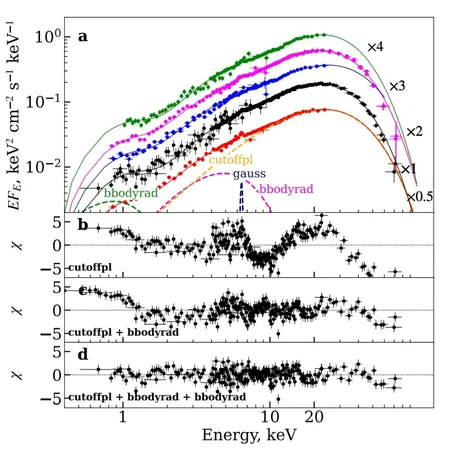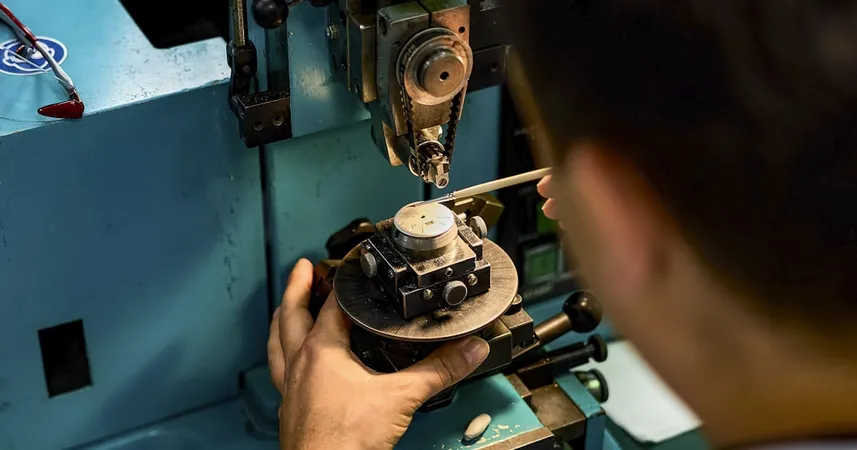
Breakthrough Discovery in Superconductors Could Revolutionize Quantum Technology
2025-01-04
Author: Ming
Breakthrough Discovery in Superconductors Could Revolutionize Quantum Technology
Researchers have made a groundbreaking discovery regarding highly disordered superconductors such as indium oxide films, which may dramatically change the landscape of quantum computing. This new insight reveals that these materials undergo abrupt first-order quantum phase transitions, defying the long-held assumption that such transitions occur gradually.
In a significant study published in Nature, scientists reported that as the disorder level in indium oxide films escalates, there is a sharp decline in superfluid stiffness—a key property that determines a superconductor's ability to maintain its state against disturbances. This critical finding signals a paradigm shift in our understanding of superconductivity and its relationship with disorder, with direct implications for the design of stable superconducting circuits and superinductors used in quantum computing.
What Does This Mean for Quantum Computing?
Superconductors are vital components in quantum computers, serving as the building blocks for qubits and essential devices like superinductors. The newfound understanding of sudden phase transitions could enable engineers to devise more resilient materials, thereby enhancing the stability and performance of quantum systems. Materials that exhibit low superfluid stiffness while still facilitating the formation of Cooper pairs, as evidenced in the study, may lead to the creation of highly efficient superinductors. These are critical for shielding qubits from external noise and improving coherence times, which are essential for successful quantum operations.
How Was This Discovery Made?
The research team carefully engineered amorphous indium oxide thin films by manipulating the fabrication conditions to control up to a defined level of disorder. Employing advanced microwave spectroscopy, they measured the plasmon spectrum of superconducting resonators made from these films. These intricate measurements allowed them to reveal the behavior of superfluid stiffness under varying disorder levels, showcasing the unexpected sudden transition rather than a predicted gradual decline.
This abrupt change not only indicates a transition from superconducting to insulating states but also highlights the complexities of quantum phase behaviors.
Unanswered Questions and Future Research Directions
Despite the compelling evidence of first-order transitions in these disordered superconductors, further research is required to elucidate the underlying mechanisms at play. The dynamics between repulsive interactions among Cooper pairs and the formation of a localized Cooper-pair glass state remain uncertain. Additional experimental efforts must focus on exploring whether this abrupt transition phenomenon is observable in other superconducting materials.
Moreover, these findings call for a comprehensive reassessment of established quantum phase transition theories, especially in the context of disordered systems, paving the way for the innovation of new quantum circuit components.
As quantum technology continues to evolve, understanding how disorder affects superconductivity could lead to groundbreaking advancements in both theoretical and practical applications. Researchers are excited about further investigating the interplay between material properties, disorder, and quantum behaviors to unravel more secrets of the quantum world.
Stay tuned as scientists work to shape the future of quantum computing, potentially redefining our technological capabilities!






 Brasil (PT)
Brasil (PT)
 Canada (EN)
Canada (EN)
 Chile (ES)
Chile (ES)
 Česko (CS)
Česko (CS)
 대한민국 (KO)
대한민국 (KO)
 España (ES)
España (ES)
 France (FR)
France (FR)
 Hong Kong (EN)
Hong Kong (EN)
 Italia (IT)
Italia (IT)
 日本 (JA)
日本 (JA)
 Magyarország (HU)
Magyarország (HU)
 Norge (NO)
Norge (NO)
 Polska (PL)
Polska (PL)
 Schweiz (DE)
Schweiz (DE)
 Singapore (EN)
Singapore (EN)
 Sverige (SV)
Sverige (SV)
 Suomi (FI)
Suomi (FI)
 Türkiye (TR)
Türkiye (TR)
 الإمارات العربية المتحدة (AR)
الإمارات العربية المتحدة (AR)